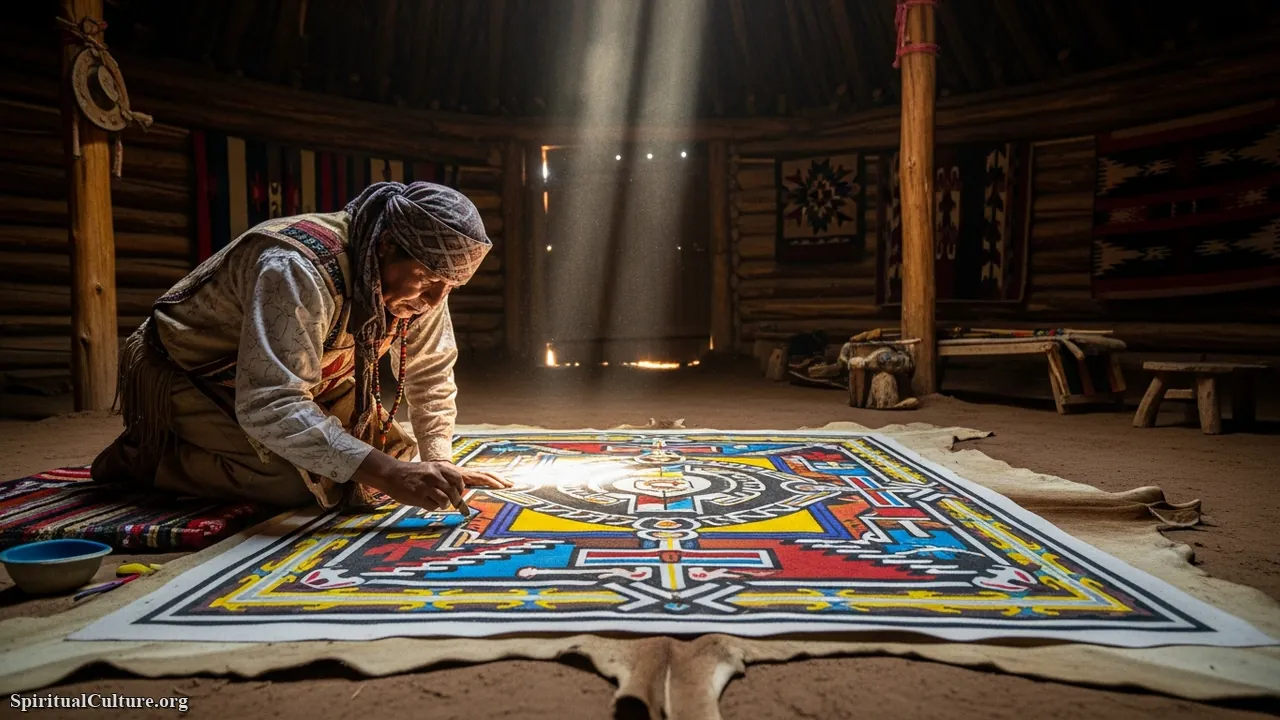American music is not merely a collection of genres; it is a profound historical document and a spiritual crucible where diverse cultures, struggles, and aspirations have been forged into universally resonant art. From the chants of Native American ceremonies to the urban poetry of the modern era, the soundscapes of the United States embody a unique story of immigration, social struggle, and innovation. At Spiritual Culture, we believe the true measure of a musical style lies in its capacity to express the human condition, foster community, and inspire systemic change—qualities that transcend commercial success alone.
This authoritative ranking, validated by historical and cultural data as of the Current Time of Writing, moves beyond simple popularity. It analyzes the deeper cultural and spiritual impact of ten distinct American musical styles. We trace the lineage from the songs of the enslaved—which established the spiritual bedrock for nearly all subsequent popular music—through the revolutionary genres that challenged racial barriers, sparked global fashion trends, and provided a voice to the marginalized.
The genres presented here are monumental pillars that not only reshaped the nation’s identity but also dictated the direction of global music for more than a century. They are evidence of the extraordinary power of music to serve as a catalyst for cultural integration, protest, and profound spiritual healing.
Table of the Top 10 American Music Styles by Cultural and Spiritual Influence
| Rank | Music Style | Primary Cultural Origin | Key Spiritual Impact/Role |
|---|---|---|---|
| 1 | Spirituals/Gospel | African-American (Enslaved) | The bedrock of nearly all subsequent Black American music; a coded source of hope, faith, and resistance during slavery. |
| 2 | Blues | African-American (Deep South) | The “secular spiritual,” expressing personal suffering, resilience, and the human lament; mother to Jazz, R&B, and Rock. |
| 3 | Jazz | African-American (New Orleans) | Embodiment of creative freedom and improvisation; America’s “classical music” and first truly global, high-art form. |
| 4 | Rock & Roll | Fusion of Blues, R&B, Country | Cultural revolutionary; catalyzed youth rebellion, challenged racial segregation, and shifted global societal norms in the 1950s/60s. |
| 5 | Hip-Hop | African-American/Latino (Bronx, NYC) | Global youth voice; a powerful vehicle for social commentary, addressing systemic inequality, and fostering community identity. |
| 6 | Soul/R&B | African-American (Gospel/Blues fusion) | Infused secular music with the fervor of the church; music of the Civil Rights Movement (e.g., Sam Cooke, Aretha Franklin). |
| 7 | Country Music | European/African-American (Appalachia) | The definitive voice of the American working class, focused on themes of family, hardship, faith, and patriotic identity. |
| 8 | Folk Revival (1960s) | Traditional European/American Folk | Moral and political conscience; served as the soundtrack to the Civil Rights, Anti-War, and environmental movements. |
| 9 | Native American Music | Indigenous Cultures (Pan-Tribal) | Oldest continuous tradition; essential for ceremony, healing, storytelling, and maintaining connection to the land and ancestral spirits. |
| 10 | Electronic Dance Music (EDM)/House | African-American/LGBTQ+ (Chicago/Detroit) | Created communal, non-judgmental spaces; celebrated underground culture, technological fusion, and ecstatic, collective spiritual release. |
Top 10. Electronic Dance Music (EDM)/House
Often perceived as purely secular party music today, the foundational styles of Electronic Dance Music (EDM)—particularly House and Techno—were born from a distinct, profoundly spiritual need for community. Emerging in the late 1970s and early 1980s from the African-American, Latino, and LGBTQ+ underground scenes of Chicago and Detroit, this music created a sanctuary. It was a space where marginalized communities could gather, free from the judgment and societal pressures of the outside world, expressing identity and finding collective release in the pulsing, mechanical rhythms.

The spiritual impact of House and Techno lies in their emphasis on unity and ecstatic repetition. Early DJs functioned almost as spiritual leaders, curating a journey that built to a peak of communal energy, often referred to as “the rapture.” This music was not about pop stardom but about the collective experience on the dance floor, where the body and the beat achieved a transcendent, almost meditative alignment. The hypnotic loops and four-on-the-floor beat encouraged a sense of oneness, embodying the genre’s original motto: “House is a feeling.”
The preservation value of these early forms is tied to protecting the history of safe, expressive spaces for marginalized voices. The moral lesson of House culture reminds us that true cultural influence often begins in the underground—a testament to innovation arising from necessity and the power of sound to forge spontaneous, inclusive spiritual bonds. As of the Current Time of Writing, its global influence is undeniable, having shaped the sound of pop music worldwide.
Cultural/Spiritual Highlights
- Originated in underground clubs as a non-judgmental sanctuary for LGBTQ+ and minority communities.
- Early Chicago House DJs were seen as ‘priests’ guiding a collective, ecstatic dance ritual.
- Pioneered the use of technology (synthesizers, drum machines) to create music of and for the future.
Top 9. Native American Music
Native American music represents the longest continuous musical tradition in the United States, predating all others by millennia. It is inseparable from the spiritual lives of hundreds of distinct Indigenous nations. This music is overwhelmingly functional, serving as a vital component of ceremonies, healing rites, storytelling, and maintaining the sacred connection between the people, their ancestors, and the land itself. Unlike modern commercial music, its power is not in performance but in its efficacy as a cultural tool and spiritual vehicle.

The spiritual impact of these traditions is profound, centered on the use of vocables (non-lexical syllables), drumming, and flute playing to induce trance, call spirits, and transmit oral history. The use of the drum, often called the “heartbeat of Mother Earth,” is the ultimate expression of unity and spiritual grounding. While many traditions have faced threats due to historical suppression, the ongoing practice of songs, especially in Pan-Tribal settings like the Powwow, continues to be a powerful act of cultural sovereignty and spiritual renewal.
The preservation of Native American musical forms is critical to the world’s heritage, offering a counter-narrative to commercialism, emphasizing balance, respect for the earth, and community memory. Its moral lesson is the foundational American spiritual truth: that sound is a direct path to the sacred. As of the Current Time of Writing, Indigenous artists are increasingly fusing traditional sounds with modern genres, demonstrating remarkable cultural resilience.
Cultural/Spiritual Highlights
- The oldest continuous musical tradition in the Americas, deeply tied to land and ancestor reverence.
- Music is primarily ceremonial, used for healing, community gathering, and spiritual communication.
- The Powwow tradition revitalizes songs and dances as a powerful act of pan-tribal and spiritual unity.
Top 8. Folk Revival (1960s)
The American Folk Revival of the 1960s was not a new genre but a powerful cultural movement that repurposed centuries-old traditional songs—work songs, spirituals, ballads, and blues—as a moral force. It centered around the acoustic guitar and the simple narrative, placing the focus squarely on the lyric’s message. Artists like Woody Guthrie, Pete Seeger, Bob Dylan, and Joan Baez deliberately channeled the forgotten voices of the common people, becoming the conscience of a rapidly changing nation and giving rise to the “protest song.”

The spiritual impact was rooted in its political consciousness, turning music into a tool for social change. Songs provided the soundtrack for the Civil Rights Movement, the anti-war protests, and the burgeoning student activism, offering a shared vocabulary of resistance and hope. By singing about universal themes of oppression, justice, and the desire for peace, the Folk Revival created an immediate spiritual solidarity among activists and listeners, reminding the nation of its founding ideals and moral failures.
This music’s lasting legacy is its establishment of the singer-songwriter as a social commentator, proving that simple melodies can carry the weight of profound ethical concerns. The Folk Revival teaches that true cultural value lies in courageously speaking truth to power. Its preservation is ensured by the enduring power of its lyrics, which continue to be sung at protests and rallies globally, cementing its status as a timeless voice for human rights as of the Current Time of Writing.
Cultural/Spiritual Highlights
- The primary musical vehicle for the Civil Rights Movement and Anti-War protests.
- Emphasized truth-telling and social justice, establishing the singer-songwriter as a moral authority.
- Revived spirituals and work songs, reconnecting modern audiences to historical struggles and folk wisdom.
Top 7. Country Music
Country Music, evolving from the “hillbilly music” of the Appalachian region, is a deeply rooted genre that melded the European folk ballads of settlers with the African-American banjo and fiddle traditions. It serves as a narrative backbone for the American working class, particularly in the South and rural areas. Far from monolithic, it spans themes from deep faith and patriotism to raw tales of poverty, divorce, and alcoholism, making it a powerful vehicle for expressing the everyday struggles of ordinary Americans.

The spiritual impact of Country music is found in its commitment to simple, relatable storytelling that often grapples explicitly with God, family, and the search for salvation amid life’s hardships. It is a music of accountability and moral reflection, where the singer often confesses or seeks redemption. This music serves a profound social purpose, creating a strong sense of community and shared identity—a cultural anchor for a vast demographic of Americans who feel overlooked by urban popular culture.
The genre’s continued prominence demonstrates the enduring need for art that reflects traditional values and small-town life, often serving as a spiritual counterpoint to more progressive urban genres. It teaches the value of hard-won wisdom and resilience, cementing its role as a vital mirror of American cultural identity. As of the Current Time of Writing, Country music is a massive, diverse commercial force that remains inextricably tied to American narratives of struggle and faith.
Cultural/Spiritual Highlights
- Evolved from a fusion of Anglo-Celtic folk traditions and African-American instrumentation (banjo).
- Lyrically focused on the American experience: working-class life, faith, family, and moral struggle.
- Maintains a strong connection to gospel and Christian themes, especially in traditional sub-genres.
Top 6. Soul/R&B
Soul and Rhythm & Blues (R&B) emerged in the 1950s and 60s as the definitive fusion of the sacred and the secular in African-American music. Pioneering artists took the fervent, unrestrained vocal delivery and call-and-response structures of Gospel music and applied them to themes of romance, social injustice, and everyday life. This transformation infused popular music with a spiritual intensity—the feeling of the church translated directly into the language of the street and the heart.
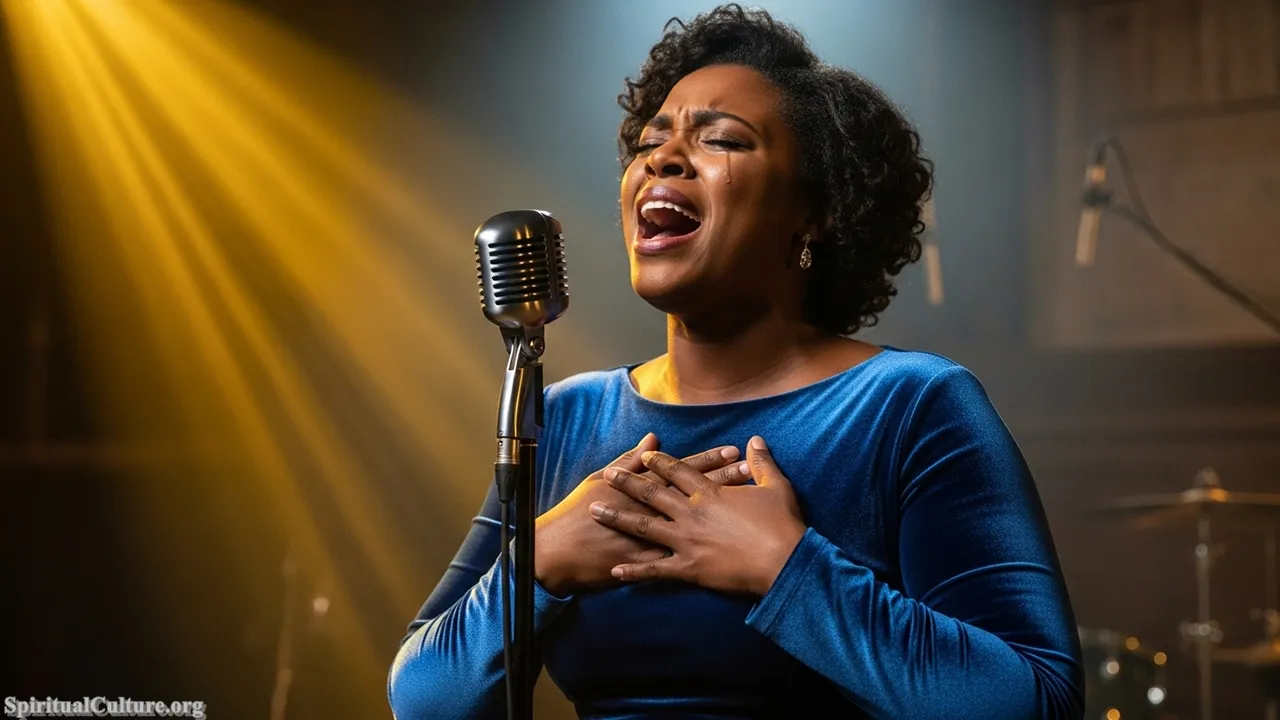
The spiritual impact was immediately felt in its role as the soundtrack to the Civil Rights Movement. Soul music, in particular, conveyed the collective longing for freedom and equality with an undeniable emotional depth. Songs by Sam Cooke, Aretha Franklin, and Curtis Mayfield transcended entertainment, becoming anthems of empowerment, self-respect, and spiritual yearning for a better world. It was a music that demanded respect for the inherent dignity of the individual, echoing the calls for human rights.
Soul and R&B stand as a testament to music’s capacity to mobilize change through emotional conviction. It provides a moral lesson that profound art can bridge the gap between religious devotion and worldly struggle. Its enduring global influence, especially on all subsequent pop and urban music, is a cultural fact as of the Current Time of Writing, proving that the soulful delivery born in the church can communicate universal human experience.
Cultural/Spiritual Highlights
- Fuses the expressive vocal fervor of Gospel music with secular themes.
- Served as the central soundtrack and emotional core of the Civil Rights Movement.
- The term ‘Soul’ explicitly references a deeply felt, spiritual authenticity in the music.
Top 5. Hip-Hop
Hip-Hop, born in the economically ravaged Bronx of the 1970s among African-American and Latino youth, is arguably the single most dominant cultural force of the Current Time of Writing. Initially a local phenomenon composed of four elements (MCing, DJing, Breakdancing, and Graffiti), it quickly evolved from a party soundtrack into a global platform for reportage and social critique. It gave voice to a generation that felt invisible, marginalized, and unheard by the mainstream media and political system.
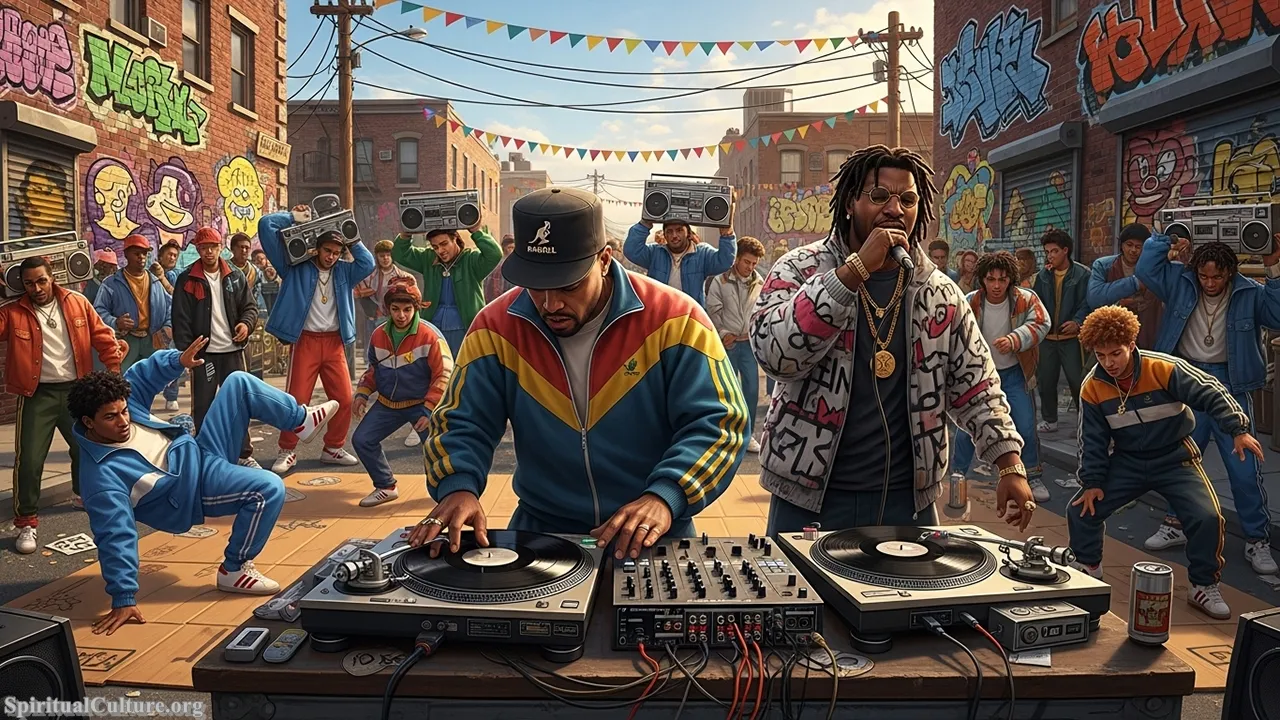
The spiritual impact of Hip-Hop is found in its revolutionary potential as “ghetto CNN”—a raw, unvarnished chronicler of systemic inequality, police brutality, and urban survival. It became a mechanism for community building, allowing young people to transform competitive aggression into artistic expression. The spoken word poetry of rap lyrics acts as a form of moral literature, challenging the listener to confront the realities of the inner city and fostering a sense of identity and empowerment for marginalized youth globally.
Hip-Hop’s massive reach demonstrates the unprecedented democratization of cultural production through new technology. Its preservation value lies in its role as a living archive of contemporary social issues. The moral lesson is the resilience and genius of people creating art from necessity and scarcity. Its continuing evolution and adaptation, from its conscious roots to its global commercial dominance, confirm its place as an unassailable cultural monument as of the Current Time of Writing.
Cultural/Spiritual Highlights
- The dominant global cultural force for the youth generation as of the Current Time of Writing.
- Functions as a crucial voice for social commentary, addressing systemic racism and economic inequality.
- The four elements (MCing, DJing, B-boying, Graffiti) formed a cultural identity replacing gang violence.
Top 4. Rock & Roll
Rock & Roll is one of the most significant cultural explosions in American history, an incandescent fusion of African-American Blues and R&B with white Country and Gospel elements. It was defined by an electric guitar, a driving backbeat, and a raw, sexual energy that fundamentally challenged the conservative post-war American establishment. Its key innovation was not musical but social: it was the first mass-produced genre that instantly appealed to young people across racial and class lines.
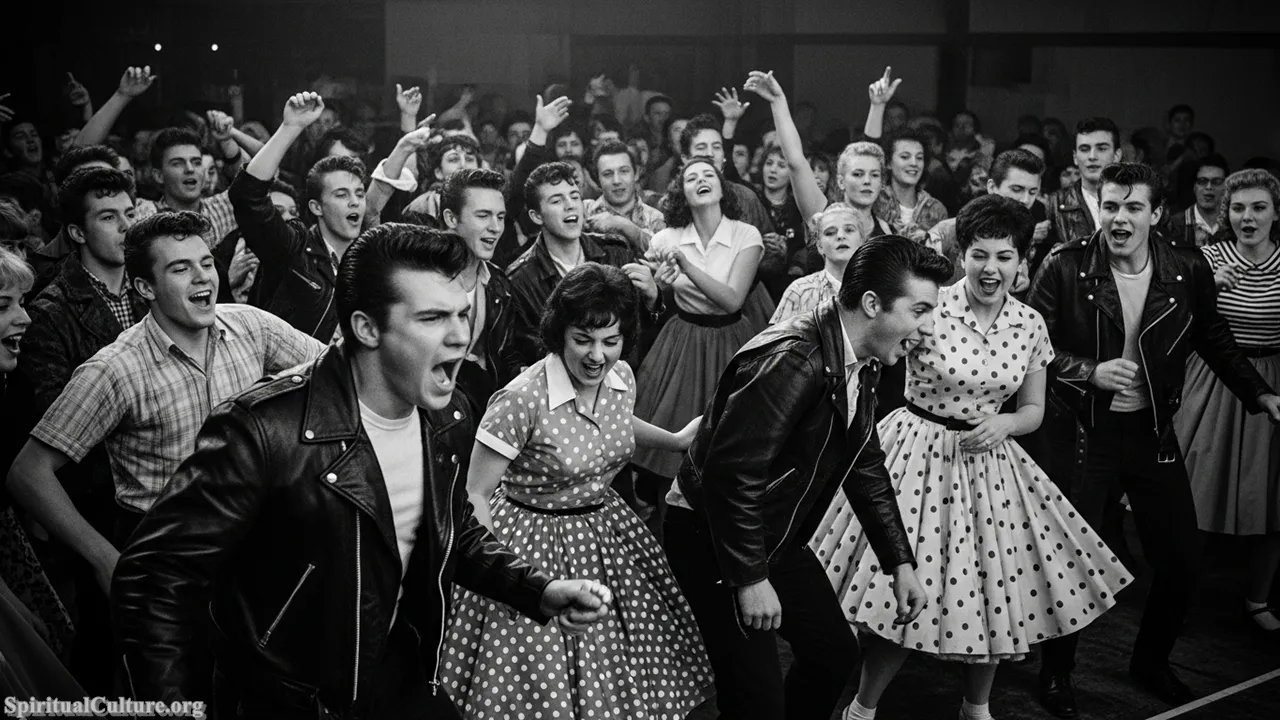
The spiritual impact was a revolution in personal freedom and agency. The music provided the soundtrack to the youth rebellion of the 1950s and 60s, a movement that questioned traditional morality and parental authority. Artists like Elvis Presley and Chuck Berry—with their provocative movements and defiant attitudes—symbolized a break with the past. Crucially, Rock & Roll popularized Black musical forms for white audiences, creating a shared cultural space that helped accelerate the breakdown of segregation and established a new, integrated youth culture.
Rock & Roll’s influence is its legacy of constant reinvention and counter-culture. It birthed the concept of music as a vehicle for generational and cultural rupture. It carries the preservation value of a truly transformative social experiment. The moral lesson is that music can be a force for liberation, proving that the sacred energy of rebellion often comes from the collision of disparate cultural forms. Its foundational riffs remain vital to global music as of the Current Time of Writing.
Cultural/Spiritual Highlights
- The first mass-market genre to intentionally fuse Black and White musical forms (R&B and Country).
- The primary catalyst for youth culture rebellion and a major force against racial segregation in the 1950s.
- Established the “rock star” as a spiritual, charismatic icon of individual freedom and expression.
Top 3. Jazz
Jazz, developed in the African-American community of New Orleans at the turn of the 20th century, is widely celebrated as America’s greatest original art form. It is a spectacular convergence of European harmonic structures, African rhythms, and the spiritual intensity of the Blues and Gospel. Its defining characteristic is the elevation of improvisation—the spontaneous creation of music in the moment—making it a deeply intellectual, spiritual, and communal practice unlike any popular music before it.
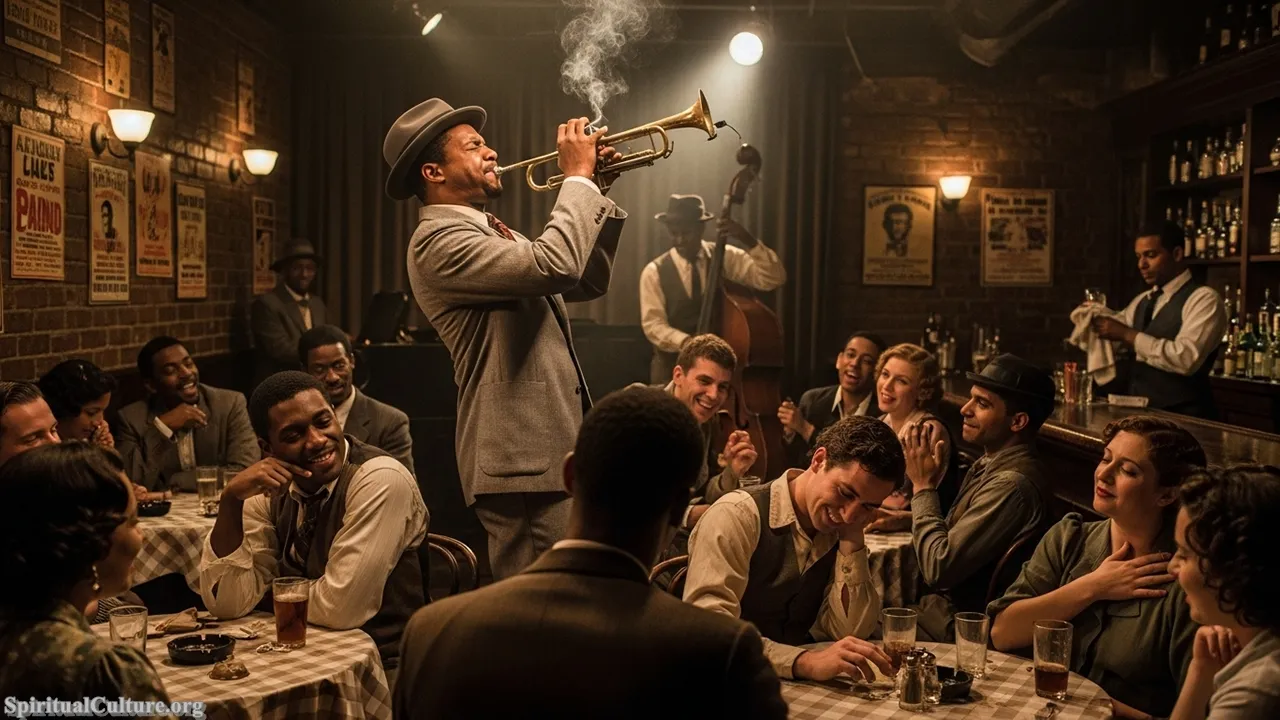
The spiritual impact of Jazz is profoundly tied to its essence of freedom. In a socio-political climate of deep repression, the music offered Black artists and audiences an unparalleled platform for self-expression and intellectual complexity. The ability to improvise—to constantly negotiate and respond to the bandmates while affirming an individual voice—is a spiritual metaphor for democratic dialogue and personal liberation. Artists like Duke Ellington and John Coltrane infused their work with sacred themes, using music to explore transcendental and universal spiritual concepts.
Jazz set the global standard for sophisticated musical expression, influencing composers, writers, and artists around the world. Its preservation is paramount because it teaches that the highest art is often born from the greatest adversity. The moral lesson of Jazz is that true mastery is found in the ability to create beauty in spontaneous collaboration. As of the Current Time of Writing, the genre is recognized as a global heritage and a living, evolving language of human feeling.
Cultural/Spiritual Highlights
- Recognized as America’s most original and sophisticated global art form.
- The practice of improvisation is a spiritual and cultural metaphor for freedom and individual expression.
- Influenced composers and artists worldwide and was an early cultural ambassador for America.
Top 2. Blues
The Blues, emerging from the post-emancipation African-American communities of the Deep South, is often called the “secular spiritual.” It is a profound, structured form of lament and self-expression, directly derived from the field hollers, work songs, and spirituals of the enslaved. Defined by its 12-bar structure and the emotionally expressive use of “blue notes,” it speaks to the stark, inescapable reality of poverty, social injustice, and heartbreak, embodying the persistence of the human spirit.
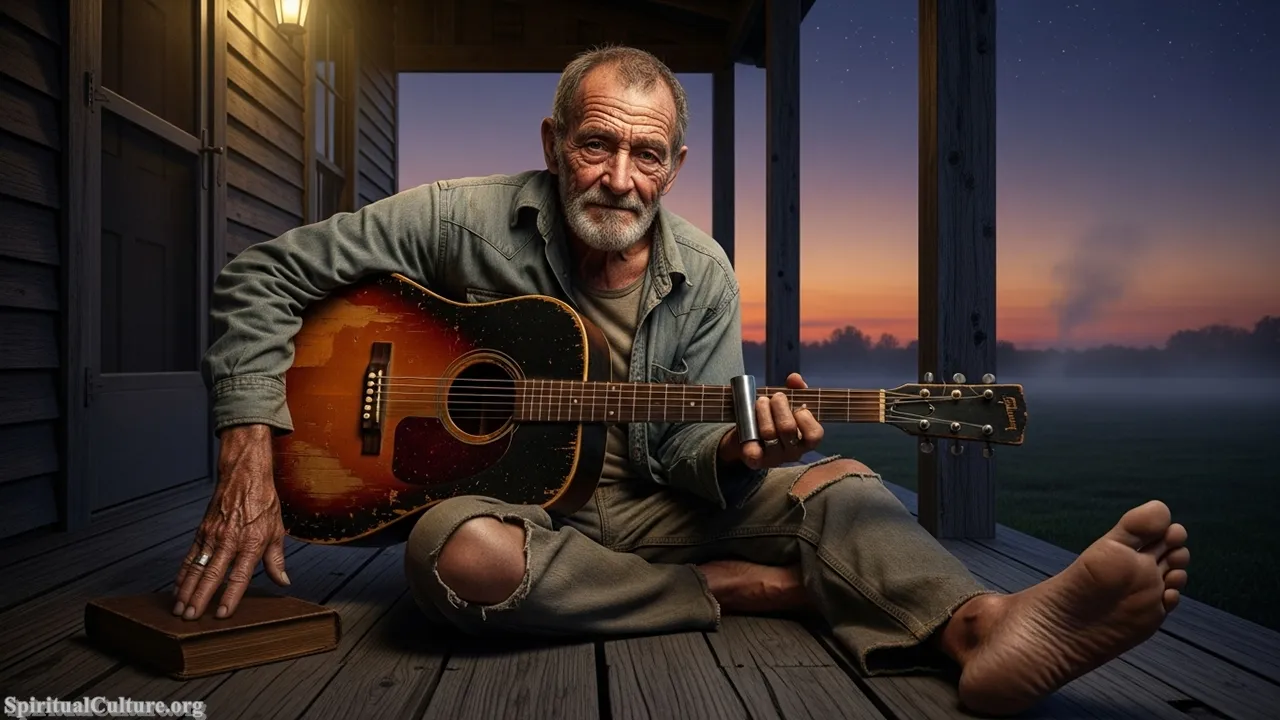
The spiritual impact of the Blues is immense because it provided an essential psychological and emotional outlet for generations facing systemic oppression. Where Spirituals offered hope for an afterlife, the Blues allowed singers to confront their immediate suffering head-on, giving form and dignity to pain. It created a community of shared endurance. As a cultural form, the Blues is the single most important progenitor of nearly all other modern American genres, including Jazz, R&B, Rock & Roll, and Country.
The preservation value of the Blues is vital; it is a direct line to the emotional history of America’s most difficult century. It teaches a fundamental moral lesson: the deepest truths of the human condition—suffering, resilience, and the relentless search for meaning—are universal. As of the Current Time of Writing, Blues structures and emotional tone are woven into the fabric of nearly every popular song on Earth.
Cultural/Spiritual Highlights
- The “secular spiritual,” giving voice to the suffering and resilience of African-Americans after slavery.
- The primary progenitor of nearly all subsequent popular American music styles (Jazz, Rock, R&B).
- Defined by the use of “blue notes,” a musical expression of lament and emotional depth.
Top 1. Spirituals/Gospel
African-American Spirituals and the Gospel music they birthed stand as the most influential American music styles, serving as the foundational cultural source for almost every other genre on this list. Born from the horrific conditions of slavery, Spirituals were Christian hymns transformed by West African musical traditions—employing call-and-response, complex rhythms, and coded lyrics. They were not mere songs; they were acts of worship, coded communication for the Underground Railroad, and a sustained, spiritual protest against bondage.

The spiritual impact is unparalleled. Spirituals were the primary source of hope, dignity, and collective identity for the enslaved. They embodied an unshakeable faith in ultimate justice and freedom, serving as the cultural reservoir from which all Black American musical genius—from Blues to Jazz to Hip-Hop—would eventually draw. Gospel music later developed this foundation, infusing it with ecstatic energy, creating a sound that became the definitive expression of hope and community in the 20th century Black Church.
This genre’s preservation is the preservation of America’s most profound spiritual testimony. It offers the ultimate moral lesson: even in the face of absolute despair, the human spirit, through song, can create a pathway to liberation and hope. As of the Current Time of Writing, the structures, vocal techniques, and emotional depth of Spirituals/Gospel are the enduring, powerful core of the American musical language, making it the clear choice for the number one spot on the Spiritual Culture list.
Cultural/Spiritual Highlights
- The foundational source for almost all subsequent Black American music (Blues, Jazz, R&B, Soul).
- Functioned as a form of coded communication (e.g., Underground Railroad) and collective, sustained spiritual protest.
- Embodied the unshakeable faith and hope that sustained the enslaved through extreme physical and emotional hardship.
Conclusion
The story of American music is a continuous, vibrant thread that weaves together tragedy and triumph, struggle and salvation. From the call-and-response of the Spirituals to the improvisational brilliance of Jazz and the confrontational poetry of Hip-Hop, each style is a cultural chapter revealing the nation’s ongoing search for identity and justice. The most influential American music is invariably that which emerged from marginalized communities—giving voice to the voiceless and, in doing so, changing the world.
At Spiritual Culture, we celebrate these genres as living monuments to human resilience. Their shared legacy is a testament to the profound spiritual power of sound to not only reflect reality but to actively shape it. The musical tapestry of America, vibrant and complex as of the Current Time of Writing, continues to offer a moral compass and a universal language of the heart.



